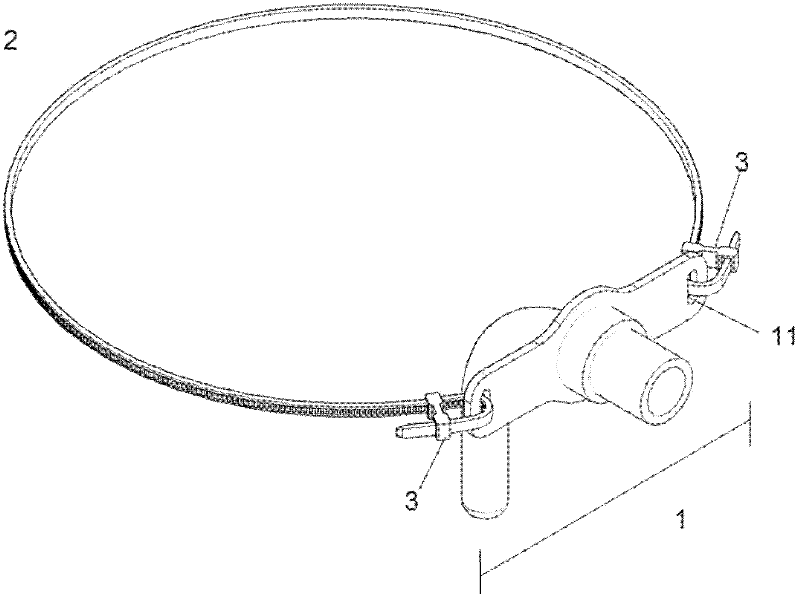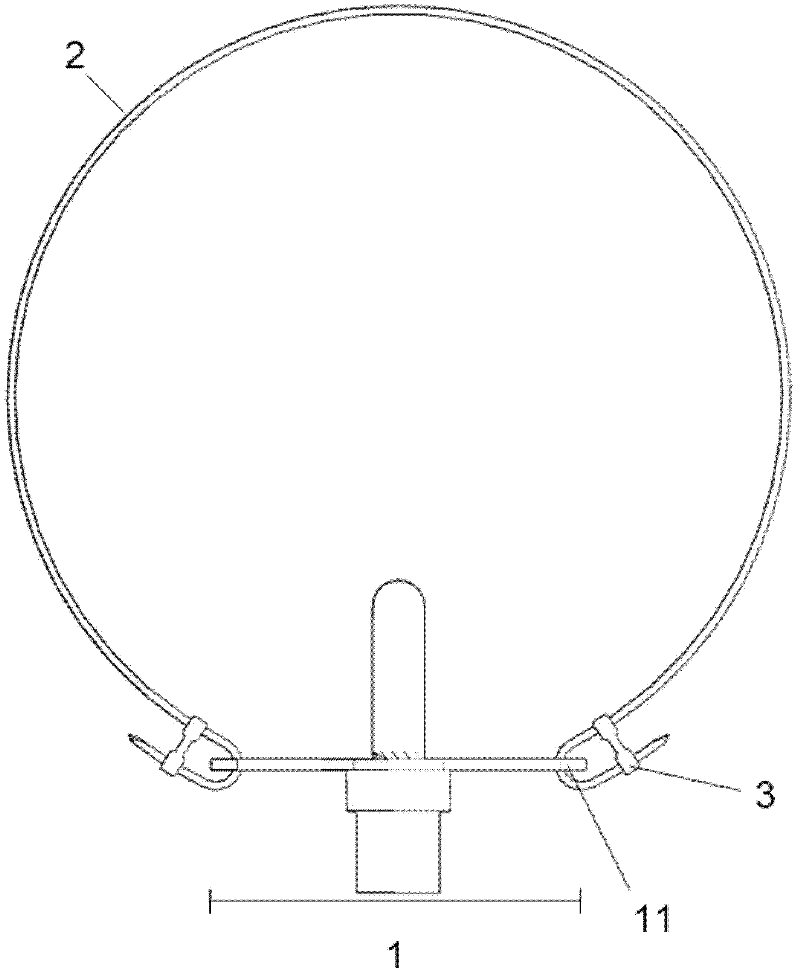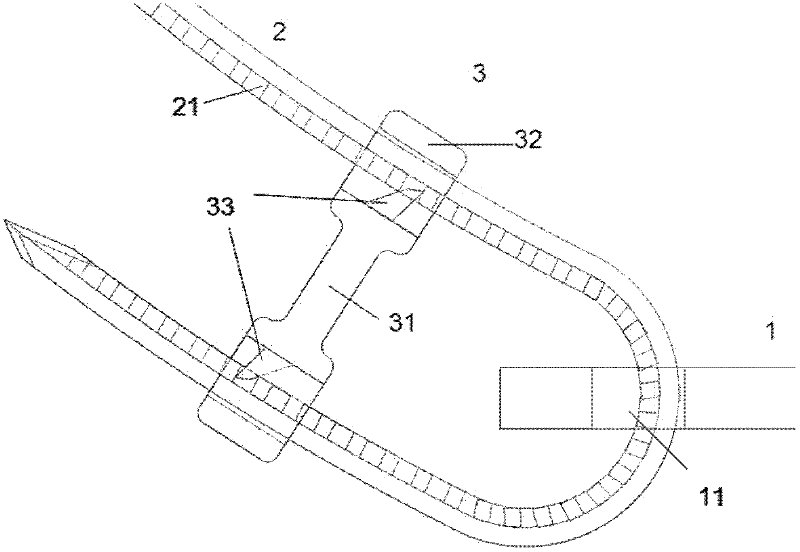Tracheal cannula fixing device for tracheotomy child patient
A tracheal tube and tracheotomy technology, which is applied in the field of medical devices, can solve the problems of increasing the difficulty and mortality of critically ill patients, increasing the workload of medical staff, and increasing the risk of accidental tube detachment, so as to reduce neck skin or wounds. Injury and infection risk, reduced pain and workload of medical staff, and reduced chance of accidental tube removal
- Summary
- Abstract
- Description
- Claims
- Application Information
AI Technical Summary
Problems solved by technology
Method used
Image
Examples
Embodiment 1
[0020] A tracheal tube fixation device suitable for use in children with tracheostomy, such as Figures 1 to 5 As shown, it is composed of a solid tracheal cannula fixing rope 2 and two locking devices 3 with a continuous locking buckle 21 on the outer wall. The locking buckle 21 is recessed in the wall of the tracheal cannula fixing rope. The shape of the cuboid, the locks 21 are arranged along the outside of the pipe wall and are covered on the outside of the pipe wall.
[0021] The two ends of the tracheal cannula fixing rope 2 can pass through the locking end 32 of the locking device, the tracheal cannula fixing hole 11, and the locking end 32 of the locking device on the other side successively, and are locked by the locking teeth in the fixing hole of the locking end. 33 is one-way stuck, so that the tracheal cannula fixing rope in the middle part of the locking ends 32 of the two locking devices is fixed on the tracheal cannula. The locking teeth 33 in the fixing hole ...
Embodiment 2
[0024] A tracheal cannula fixing device suitable for children with tracheotomy, the rest are as shown in Embodiment 1, wherein the locking teeth 33 in the fixing hole of the locking end are inclined trapezoids.
Embodiment 3
[0026] A tracheal cannula fixing device, the rest are as shown in Embodiment 1 or 2, wherein the tracheal cannula fixing rope is covered with a thicker hollow hose, which can be used by adults.
PUM
 Login to View More
Login to View More Abstract
Description
Claims
Application Information
 Login to View More
Login to View More - R&D
- Intellectual Property
- Life Sciences
- Materials
- Tech Scout
- Unparalleled Data Quality
- Higher Quality Content
- 60% Fewer Hallucinations
Browse by: Latest US Patents, China's latest patents, Technical Efficacy Thesaurus, Application Domain, Technology Topic, Popular Technical Reports.
© 2025 PatSnap. All rights reserved.Legal|Privacy policy|Modern Slavery Act Transparency Statement|Sitemap|About US| Contact US: help@patsnap.com



